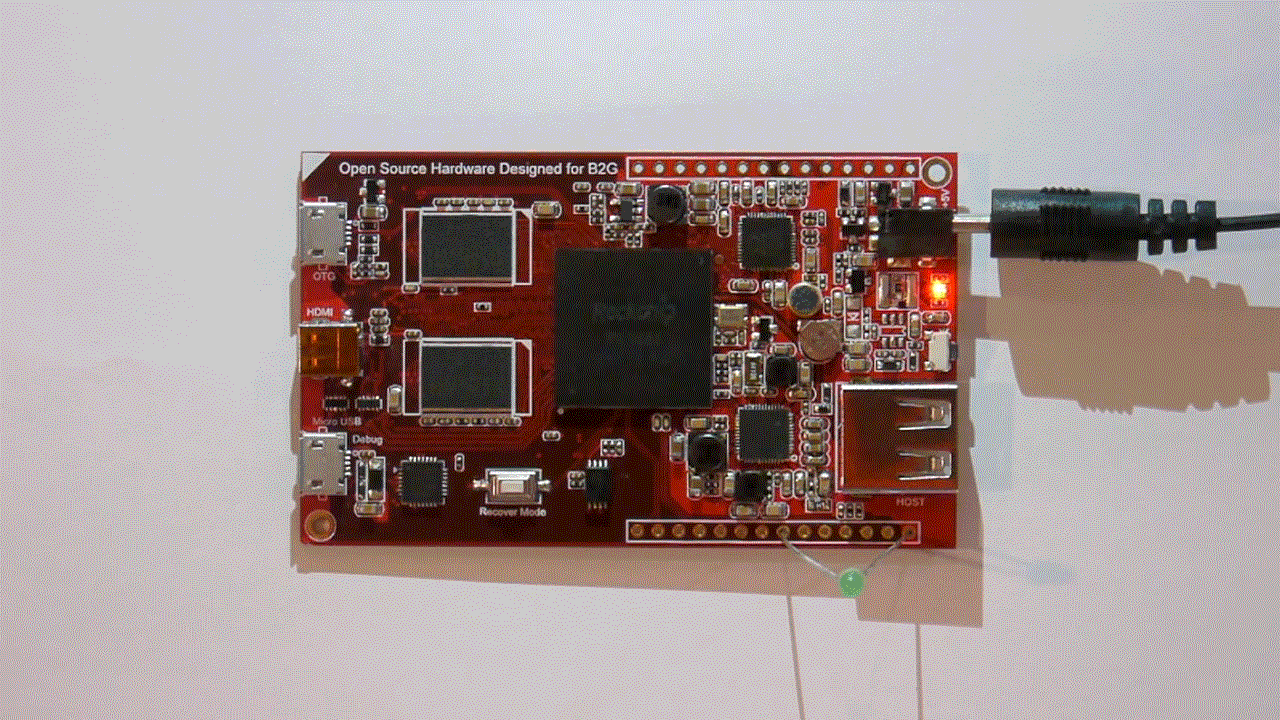 |
| CHIRIMEN (source : http://mozopenhard.mozillafactory.org) |
Chirimen is controlled by Firefox OS, which means that application are webpages (consisting of html/css/javascript) and hardware bindings are exposed via javascript binding through the gecko engine. The board above is controlled by this code (copied from http://mozopenhard.mozillafactory.org/):
<!doctype html>
<html lang="en" dir="ltr">
<head>
<title>CHIRIMEN example - Led</title>
<script type="text/javascript" src="gpio.js"></script>
<script type="text/javascript">
var v = 0;
GPIO.getPort(196).then(
function(port) {
setInterval(toggleLight, 1000, port);
}
);
function toggleLight(port){
v = v ? 0 : 1;
port.write(v);
}
</script>
</head>
<body>
</body>
</html>
I do not know whether Chirimen will be successful, but I still find it to be a very good project for the Mozilla Foundation. Actually, one of the best bets for future.
You may be not following this, but the Firefox browser is in a decline:
.svg/500px-Usage_share_of_web_browsers_(Source_StatCounter).svg.png) |
| Firefox marketshare decline by Daniel Cardenas (Wikipedia) |
This is a big problem, because Mozilla is commited to openness and privacy protection, and therefore it cannot monetize user data. Oh, and it does not have a big company behind it earning money elsewhere.
What is more, competitive browsers are installed on handheld devices because those browser owners successfully promoted mobile operating systems. Firefox cannot innovate fast enough to win user base (all innovations can be easily copied) by Chrome/Safari/Edge.
If this trend continues, Mozilla will cease to exist in 2020.
So Mozilla needs to find a new market. Desktop is lost, mobile is lost (Firefox OS was too late to the market).
But IoT looks attractive. It still has not reached mass production (because it is still to expensive). The breakthrough will happen when someone will be able to deliver to the market devices so cheap it will be possible to put them everywhere (I think it is < 1$ price point).
Nobody can tell when it will happen exactly (as innovation is unpredictable). But it may happen relatively soon (before 2020). IoT in every home, in every piece of clothing or even pens. Gazillions of devices.
Now imagine that Mozilla earns 5% of market right now. Or even 1%. 1% of gazillion is still a huge potential. This is the true reason why I find this device to be a good move. Mozilla needs to do three things:
- work on this product with users and improve it constantly
- survive 5 years and build know how
- when < 1$ IoT device enters the market, attack it with full speed.
I would be very careful with saying that the IoT market is full. Chirimen may have a lot more sense that it appears to.
Disclaimer: It is a strong opinion, weakly held. I'd love to be at Mozilla right now and have my analysis verified.






